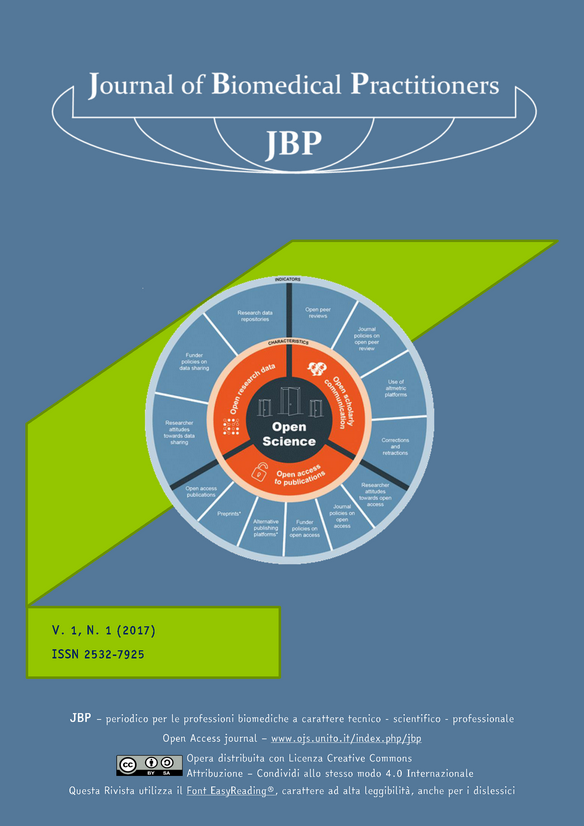Il problema dell’identificazione di forme: considerazioni sull’analisi fisionomica
Contenuto principale dell'articolo
Abstract
Nella diagnostica per immagini la corretta determinazione di forme è la base per la diagnosi di una malattia o della sua assenza; la qualità con cui vengono realizzate le immagini oggetto di analisi sono sia di natura squisitamente tecnologica, come la risoluzione, il contrasto o l’energia totale, sia di natura posturale: il corretto posizionamento del paziente è determinante per poter apprezzare correttamente l’insieme ed il particolare e produrre così la giusta diagnosi. Inoltre, se si eccettuano casi come la ricerca e rappresentazione in proiezioni oblique di fratture o infrazioni occulte, nei quali vada ricercato un particolare specifico risultato e che richiedono di volta in volta azioni diverse, l’individuazione e l’utilizzo di criteri comuni per l’acquisizione è di fondamentale importanza. Essi devono poter garantire l’elevata qualità, ma soprattutto la riproducibilità del risultato dell’esame diagnostico, e sono alla base di tutte le scuole di radiologia medica, proprio allo scopo di rendere il risultato della ripresa e la sua interpretazione il meno dipendenti possibile dall’operatore.
L’identificazione di particolari forme è una attività normalmente delegata alla capacità professionale di una persona esperta del dominio che, in quanto tale, è soggetta a errori di valutazione non tanto per imperizia o superficialità, ma per limiti intrinseci del nostro sistema occhio e della bidimensionalità dell’immagine, frutto della proiezione su un piano di un corpo tridimensionale.
In analogia alle difficoltà connesse con la citata diagnostica per immagini, nell’approccio ai problemi legati alla corretta identificazione delle forme, può essere utile iniziare dalle problematiche di identificazione di volti; è una attività che ci appartiene e che tutti compiamo costantemente pertanto sarà più semplice comprendere le difficoltà intrinseche connesse alla percezione delle forme fisionomiche.
Saranno analizzate le tecniche utilizzate per l’attività di identificazione di soggetti e le difficoltà operative che emergono quando si debba attribuire una identità sulla base di aspetti fisionomici estratti da documenti fotografici; questa attività è molto simile alla percezione morfologica di strutture anatomiche e ne condivide le difficoltà.
Downloads
Dettagli dell'articolo
Gli autori mantengono i diritti sulla loro opera e cedono alla rivista il diritto di prima pubblicazione dell'opera, contemporaneamente licenziata sotto una Licenza Creative Commons - Attribuzione che permette ad altri di condividere l'opera indicando la paternità intellettuale e la prima pubblicazione su questa rivista.

